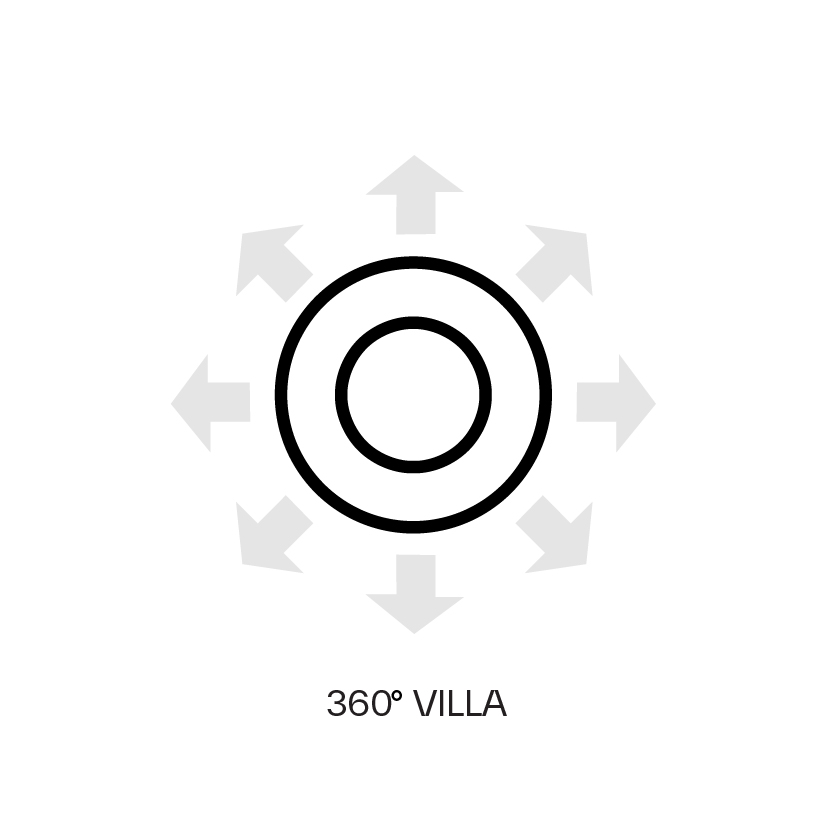STATUS
IN CONSTRUCTION
SAGI ISLAND, JAPAN
CLIENT
Not a Hotel, Inc.
TYPOLOGY
Hospitality
SIZE M2/FT2
2,350 / 21,500
STATUS
IN CONSTRUCTION
SHARE
Japanese hospitality group NOT A HOTEL has partnered with BIG to expand the company’s existing six hospitality offerings across Japan. Located on a 30,000 m2 site on Japan’s remote Sagi Island, NOT A HOTEL Setouchi brings three villas to the island’s southwestern cape with panoramic views of the Seto Inland Sea.
The design for NOT A HOTEL Setouchi builds on the longstanding relationship between Scandinavian and Japanese design values. The luxury resort weaves naturally throughout the remote island’s mountains, incorporating natural and local materials while promoting a connection to nature.
"In the last few decades, Japan has been attracting attention as a place to experience stunning natural landscapes as well as high-end design, innovative architecture, and cutting-edge art. The Seto Inland Sea area, where NOT A HOTEL SETOUCHI will be built, brings together all of these aspects of Japanese tourism into a single site. In partnering with BIG, we are creating one of Japan’s most luxurious villas on Sagi Island, which will be a gateway for more people to experience the charm of the Setouchi region."
The relationship between Scandinavian and Japanese design began in the 19th century, when Japan opened their borders to international travellers. Soon after, Scandinavian designers began visiting the country and quickly became fascinated by the Japanese style for its simplicity, use of natural materials and connection to nature – the same principles that guided the design ethos for NOT A HOTEL Setouchi.
The masterplan for NOT A HOTEL Setouchi prioritises restoration of the undulating terrain, where grass will be harvested before construction begins, while olive trees, lemon trees and other native vegetation will be reintroduced to further enhance the site’s natural beauty. The three villas – named ‘360,’ ‘270’ and ‘180’ depending on location and corresponding views – intentionally blend into the landscape’s natural contours, aligning with existing roads and infrastructure. Spread across varying elevations, the resort appears like a ribbon winding through the site.
"Our design approach for NOT A HOTEL Setouchi wasn’t about imposing our ideas on the site; instead, it involved exploring, observing and understanding the landscape. We envisioned how to best leverage this distinctive and remarkable terrain and fixed upon a design that mirrors the elegance of traditional Japanese architecture. Japan is one of the cultures in the world where commitment to craft and care for quality remains intact. The honesty and simplicity of the structure and careful choice of materials can be said to have greatly influenced the traditional architecture of Japan and the modern architecture of Denmark. Maybe that's why when I go to Japan, I always feel like I'm coming home. NOT A HOTEL Setouchi will be an experiment in what happens when the sensibilities of both countries come together – the Danish desire for simplicity and the care and perfection of Japan."
Each villa has distinct design characteristics that fit into their specific location onsite. The ring-shaped ‘360’ is perched at the highest altitude, offering literal 360-degree views of Setouchi’s land and seascape with a central courtyard for privacy. ‘270’ captures a 270-degree panorama of the surrounding archipelago, featuring bathing spaces arranged like floating islands around the pool alongside a sauna and open firepit. At the peninsula’s tip, ‘180’ is the closest to the sea, whose curvature follows the coastal landscape. The home includes an inner courtyard with gentle slopes, mossy pathways and trees that change colour with the seasons.
The three- and four-bedroom villas reference the design of traditional Japanese single-story houses, incorporating materials local to Japan. The essential elements of the homes – the façade, roof, walls and floor – all preserve traditional Japanese architectural elements while being reimagined for modern-day use. Glass façades that connect the interior and exterior are a modern interpretation of shoji screens, while the pattern of the Genshoseki natural slate floors is inspired by the layout of traditional Japanese tatami mats. The load bearing curved clay walls are achieved using the traditional rammed earth technique, incorporating soil directly from the site.
Each villa opens into a large, unified space, with areas of functionality such as bathrooms and storage rooms consolidated into separate volumes, or pods. Skylights are placed atop these more private pods to provide views from any point within the buildings – balancing openness with solitude.
The villas all feature traditional Japanese baths, calming colour palettes, outdoor firepits and heated infinity pools that blur the boundaries between the properties and the surrounding nature.
The roofs at NOT A HOTEL Setouchi are covered on all sides with solar tiles, representing a technological and modern interpretation of a traditional Japanese roof. Rainwater collected by the elevated roofs is used to irrigate the landscaping, while the operable façades and overhangs promote passive cooling in spring and summer.
"Setouchi comprises a dense and dramatic archipelago, characterized by beautiful undulating silhouettes of mountainous islands. Our approach for this design aims to simultaneously expand and enhance the vast panoramic views of the archipelago while creating moments of intimacy and privacy through minimal architectural interventions. NOT A HOTEL Setouchi fuses the essence of BIG and modern Danish architecture with the DNA of NOT A HOTEL and traditional Japanese culture."
Bjarke Ingels Leon Rost Jan Leenknegt Margaret Tyrpa Sang Ha Jung Yu Inamoto Casey Tucker Andrea Hektor Andrea Hektor Joanna M. Lesna Mamoru Hoshi Naysan John Foroudi Ryohei Koike Théo Hamy Steven Op Don Chen Ahmad Tabbakh Konstantinos Koutsoupakis Suyue Huo Jeremy Felson Oskar Maly Jasmine Nicholson Cullen Fu Matthew Lau Pavel Tomek Fani Christina Papadopoulou Paul Heberle
Maeda Corporation
ARUP Japan
1moku
NOSIGHT
BOCS
Mir
LIT design




